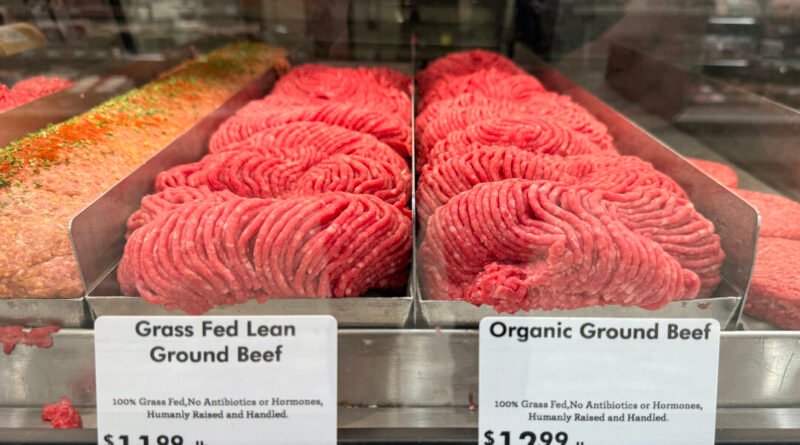US Overtakes Australia as Top Export Market for Beef Due to Declining American Production
Demand from Japan, South Korea, and the United States is expected to intensify competition for beef for the remaining part of the year.
Based on the data from Meat and Livestock Australia (MLA), the United States ranked as the primary export market for Australian beef in the first three months of 2024.
Australian beef exports to the United States surged due to a decline in American production, a trend that is projected to persist.
“The continual decline in North American beef production, which has been ongoing since at least January 2023, has now begun to materially affect global markets this year,” the report added.
Demand from Japan, South Korea, and the United States may intensify competition for beef for the rest of the year.
The report highlighted that increased Australian production will partially fill the supply gap, but it will not fully compensate for the decrease in U.S. supply.
“The U.S. stood out as the primary export market for Australia in Q1, compensating for shortfalls in dairy cow slaughter. With a decrease in American production, Australian beef exports to the U.S. are predicted to continue rising,” as stated in the report.
“Simultaneously, Australian market share for high-quality beef in Japan and Korea will continue to climb while U.S. exports decline, and sturdy Australian supply will assist in alleviating the shortfall.”
China Shows a ‘Slowing Down’ Trend
China’s economic performance is a crucial point to monitor for the rest of the year.
The report observed that China, being the largest beef importer globally, experienced a “slowdown in key economic indicators” along with weaker consumer sentiment.
“This slowdown has impacted import pricing and has noticeably decelerated import volume growth. A significant decline in export volumes to China could speed up the diversification of South American exports and potentially engender substantial pressure on cattle prices,” the report highlighted.
Essential Beef Export Statistics
The report disclosed that Australia produced 570,681 tonnes of beef and veal in the first quarter of 2024.
This marked a substantial 15 percent surge from the first quarter of 2021 but was 1 percent lower than the preceding quarter.
Australia’s domestic market dominated, accounting for 28 percent of local production in the first quarter of 2024.
Australian exports to North America soared by 86 percent compared to the same quarter last year, reaching 104,797 tonnes of carcass-weight equivalent (CWE).
Shipments to Japan escalated by 25 percent annually to 85,581 tonnes, while exports to China rose by 9 percent to 73,569 tonnes. Conversely, exports to South Korea declined by 8 percent to 53,612 tonnes.
Australian exports to all other markets climbed by 17 percent compared to the first quarter of 2023.
Positive Outlook
MLA Global Supply Analyst Tim Jackson underscored the significant influence of overseas supply dynamics on the Australian beef industry.
“Though a small player in global production, Australia is a major contender in export markets. So far this year, the United States has emerged as the primary market for Australian beef,” he remarked.
He pointed out that prolonged destocking in the United States had contributed to diminished American production.
“This surge in demand for Australian beef in the United States, Japan, and South Korea, where the U.S. competes with Australia for market share,” he emphasized.
Mr. Jackson mentioned an optimistic outlook for Australian exports, citing supply shortages and the favorable Australian dollar.
“Alongside the decline in U.S. production, South American slaughter rates have been notably high due to persistent drought conditions in key cattle-producing areas. As conditions normalize, production is expected to decrease, further reducing global beef supply,” he explained.
“Despite waning consumer confidence, unemployment remains low in most developed nations, and inflation is on the decline in the majority of our export markets. Additionally, a weakened Australian dollar has made Australian beef more competitive on the global stage.”
US East Coast Popular Destination for Beef and Veal Exports
Separate Australian red meat export figures released by the Department of Agriculture, Fisheries, and Forestry detailed Australian beef exports to the United States east coast, west coast, and Canada.
Furthermore, Australia delivered 1.28 million kilograms of beef and veal to Canada.
Australia also exported 13.24 million kilograms of beef to Japan, 9.4 million to Korea, 1.83 million to Japan, 15.59 million to other parts of Asia, 1.6 million to the Middle East, 0.57 million to the European Union, 0.028 million to Western Europe, and 0.68 million to various other destinations.
In June, Minister for Agriculture Murray Watt emphasized the high desirability of Australian meat due to its quality, health attributes, sustainability, and taste.





